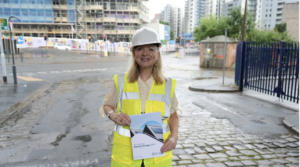Ideas for change: Community Buildings Checker
 Working out the basic viability of a building project does not always come easily to community groups – especially newer ones – and the ramifications of getting it wrong can be far reaching. A new set of tools aims to help the process.
Working out the basic viability of a building project does not always come easily to community groups – especially newer ones – and the ramifications of getting it wrong can be far reaching. A new set of tools aims to help the process.
While localism and its associated planning reforms have opened up the enticing possibility of greater local control for such groups, the excitement generated by envisioning new community buildings is not always matched by the knowledge needed when planning and executing what are often fairly complex construction challenges.
For every lucky group that can count an architect, building engineer or quantity surveyor among its ranks, there are plenty more that cannot; and for those that try to use guesswork in place of experience, the chances of making early and costly mistakes are much increased.
Locality was appointed by DCLG to provide guidance on the new community rights introduced under the localism act 2011, and has answered enquiries from many thousands of community organisations over the last three years. Those considering Community Right to Build in particular, were often found to be start-ups, and it was quickly evident that introducing a new web based guidance tool would go a long way towards assisting with the early stage viability work needed by so many of them.
The interactive Community Buildings Roadmap and Checker was the result and it is now available to all community groups free at www.mycommunityrights.org.uk.
It comprises two main parts: the Road Map section looks at the different stages of a community building project, such as deciding whether or how to proceed, and how to develop the proposal; the Checker element calculates the costs of a project based on a combination of details entered by the group or, where specific details are not known, assumptions based on industry standards. At the end of the process it generates a report, showing among other things, what funds will be needed, what the repayments on any lending might be, and how any assumptions on sustainability are likely to stack up.
Of course it’s only intended to be a broad guide. It works on generalities so it’s not highly tailored, though there are a number of input elements that can be adjusted to reflect individual circumstances and therefore improve the detail of the end report. What is important though, is that it serves to help organisations focus on key elements of their project at a very early stage, flagging up issues they may not have considered and introducing alternative ways of doing things.
One group considering a complex proposal to save the site of a former leisure centre for community-led affordable housing and a community hub, is Desborough Community Development Trust in Northamptonshire. Having launched a successful Community Right to Bid process which resulted in Kettering Borough Council listing the site as an asset of community value, the group is now working with Desborough Town Council to produce a Neighbourhood Plan. Part of that will consider the future use of the site, and local people are already working on the possible design and layout of the land and its buildings.
Desborough is the perfect example of a motivated and determined group able to rely on the support of the community, but one that would never claim to be experienced in the process of constructing community buildings. For them, it’s important to demonstrate to landowners Kettering Borough Council that they are doing everything possible to take a professional and considered approach to the site. The Roadmap and Checker is a practical way of gaining information and evidencing their efforts to avoid mistakes and get it right first time.
The more established North Smethwick Development Trust has just celebrated the completion of a refurbished and significantly extended community hub, the Brasshouse (pictured), in the West Midlands. Though they were fortunate to be able to call on many years of experience in terms of building projects, they also believe that the Roadmap and Checker could have helped them as an early stage scoping support tool.
Inevitably though, it’s community groups looking towards first time asset ownership who stand to benefit most. It’s not the only tool of its kind in the marketplace, but unlike many of the others, it doesn’t require users to have detailed knowledge to be able to navigate it and in that sense it provides something quite unusual: an easy and quick route to help.
- For more information see http://mycommunityrights.org.uk/
















